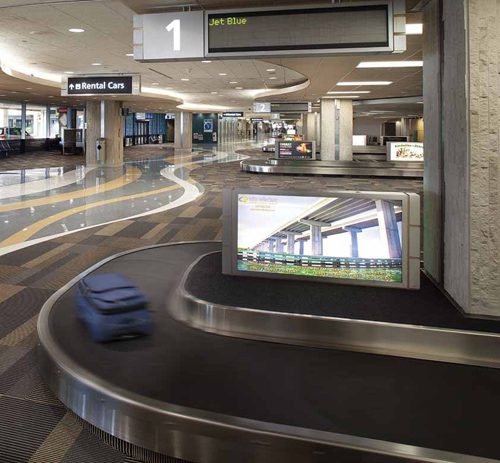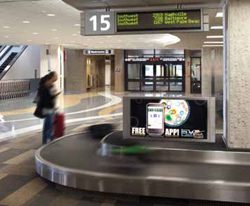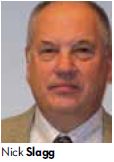
 Tampa International Airport (TPA) is known for exceeding passenger expectations. Frequent flyers participating in the 2010 Zagat Survey voted it their second favorite U.S. airport, and J.D. Power and Associates’ 2010 North American Airport Satisfaction Survey ranked it No. 3 among medium-sized airport.
Tampa International Airport (TPA) is known for exceeding passenger expectations. Frequent flyers participating in the 2010 Zagat Survey voted it their second favorite U.S. airport, and J.D. Power and Associates’ 2010 North American Airport Satisfaction Survey ranked it No. 3 among medium-sized airport.
J.D. Power survey respondents identified TPA’s terminal facilities and baggage claim as standout features – an especially noteworthy compliment, considering that the airport was replacing equipment and expanding its baggage claim during the assessment period. The $21.1 million project designed to increase capacity and reduce baggage retrieval time began in February 2009 and was substantially complete in July 2010. Survey respondents ranked airports based on travel experiences during the 2009 calendar year.
|
factsfigures Project: Baggage Claim Replacement/Expansion Location: Tampa (FL) Int’l Airport Owner: Hillsborough County Aviation Authority Estimated Cost: $21.1 million Substantial Completion: July 2010 Design-Builder: Mathews Division of Hardin Construction Co., LLC Prime Design Consultant: Gresham, Smith and Partners Baggage Handling Design, Engineering, Mfg. & Installation: G&T Conveyor Company Baggage System Drawings & Specifications: CAGE Inc. Structural Engineering: Walter P. Moore & Associates IT & Security Engineering: TLC Engineering for Architecture Plumbing & Fire Protection Engineering: Gartek Engineering Corp. Electrical & Mechanical Engineering: Voltair Consulting Engineers Associate Architect: Howard & Associates WMBE Coordination: Aerial Business Group Tapestry Consulting: Textile Conservation and Restoration Tapestry Cleaning: Sign-Age Carpet: Duffy & Lee Carpet Co. Terrazzo: Steward Mellon |
Instead of 17 baggage claim devices, there are now 14 devices with longer conveyor belts that provide more overall claim device capacity. The ultimate result, notes Wheat, is a better customer experience.
Staking a New Claim
The airport’s previous claim devices had become expensive to maintain and ceased to meet the airport’s needs, Wheat recalls. Passenger travel habits and airline aircraft had simply evolved since the airport’s former equipment was installed in 1971.
To bring the baggage claim area up to date, Hillsborough County Aviation Authority hired Mathews Division of Hardin Construction Company to manage the design/build project. Hardin, in turn, contracted Gresham Smith and Partners (GS&P) to lead the design team and provide aviation planning, architecture, interior design and wayfinding improvement services.
GS&P’s analysis of the existing claim area found misused and underutilized space. While some areas were overcrowded, adjoining spaces 40 to 50 feet away remained empty, explains GS&P project manager Grant Clifford. Passengers queuing three or more deep at claim devices led to congestion at key circulation areas near escalators and elevators.

“We observed passenger flow during peak times and could see there were opportunities to make improvements,” Clifford recalls.
GS&P found that passengers at TPA typically arrived in the baggage claim area 10 to 12 minutes after deplaning – fast for an airport with a then 140,000-square-foot landside terminal, notes Clifford. Baggage, however, took about 20 minutes to arrive, which is also a quick turnaround by the airlines, he adds. As soon as bags came through the shutter, people were picking them up.
In designing a new claim area, GS&P not only wanted to better accommodate the nearly 19 million annual passengers the airport currently serves, but prepare for its projected growth as well. The company forecasted the impact that 2.5 million more arrivals would have on the baggage claim area by adding extra flights with patterns typical of an origination and destination airport like TPA. Using simulation modeling from TransSolutions, designers assessed how various configurations would affect passenger flow. While original plans called for adding 19 baggage claim devices, schedule analysis for 25 million passengers showed the airport wouldn’t need that many, Clifford reports.
Aircraft size was also considered. The average airliner arriving at TPA is a small narrow body, with about 120 to 140 passengers (Boeing 737s, etc.). According to International Air Transportation Association (IATA) guidelines, TPA’s baggage claim presentation – the part passengers see – should be 120 to 130 feet. Previous claim devices, notes Clifford, were 20% to 30% percent too small for current aircraft arriving at the airport.
No Slope Needed
According to Wheat, new flat plate baggage claim devices accounted for about 20% of the project’s total cost. The equipment matched the airport’s needs better than sloping plate devices on numerous fronts. Because they don’t require passengers to lift baggage over a lip or edge, flat plate claims accommodate TPA’s senior customers. They also require less reach than sloping plate devices designed to handle up to three bags deep – another plus for Florida retirees. With most passengers retrieving baggage quickly, large capacity sloping plate baggage claims were simply not needed. They would have also presented additional infrastructure challenges at TPA.
 GS&P subcontracted CAGE Inc. to produce the system’s drawings and specifications. CAGE also provided bid support, construction administration and baggage claim device inspection/acceptance services.
GS&P subcontracted CAGE Inc. to produce the system’s drawings and specifications. CAGE also provided bid support, construction administration and baggage claim device inspection/acceptance services.
G&T Conveyor Company removed the airport’s aging baggage claim equipment and installed its own. According to G&T project manager Ted Dreaver, the creaking, banging and motor noise produced by the former devices made it clear they were ready to be retired.
 Motors for the new system are located in the bag makeup area, behind the back wall to facilitate maintenance and diminish noise in public areas. “(The new equipment) is completely quiet when you are standing next to it,” Dreaver notes.
Motors for the new system are located in the bag makeup area, behind the back wall to facilitate maintenance and diminish noise in public areas. “(The new equipment) is completely quiet when you are standing next to it,” Dreaver notes.
G&T also replaced the previous light board control system with Allen-Bradley programmable logic controllers, integrated display computers and control devices. The upgraded controls allow for maintenance diagnostics at each flat plate and improve security.
The new equipment’s 153-foot presentation length meets IATA standards for large narrow-body aircraft, specifies Clifford. In addition, two larger claim devices have presentation lengths of 243 feet to accommodate baggage from large wide-body aircraft such as Boeing 777s. The size allows plenty of room for two, even three flights on one belt, says TPA project manager Henry Brown.
Passengers find it easier to locate their baggage when an airline uses one or two belts for all of its flights instead of spreading them out over three or more.
Room to Move
In addition to updating the claim devices, TPA’s project aimed to improve the flow of passengers retrieving baggage. Clifford estimates that reducing the number of claim devices and establishing a new layout increased circulation space around devices by about 50%.
The former layout, observes Mathews project manager Nick Slagg, had columns between conveyors and in the middle of passenger waiting areas. The new layout wraps claim devices around the columns.
“Our goal was to create more open areas to allow passengers to congregate to wait and be able to leave easily once they have retrieved their bags,” Clifford says.
To further alleviate passenger congestion, seating and luggage carts were moved out of the way. The seating area was also more clearly defined.
 As each new claim device became operational, it was immediately apparent that congestion was being minimized, relates Clifford.
As each new claim device became operational, it was immediately apparent that congestion was being minimized, relates Clifford.
“The new space is very user-friendly,” Brown agrees, noting that passengers have found it very easy to get their bags.
Airline bag service offices were relocated to be nearest their respective bag claim devices to help passengers with misplaced bags, Slagg notes.
Finishing Touches
In addition to enhancing operational efficiencies, the airport also wanted to update the look of its baggage claim.
Previously, the main circulation areas were well lit, but the claim devices were often dim because half the lights turned off automatically when a claim device wasn’t running. To brighten up the space, more efficient indirect fluorescent lighting was installed above and around the claim devices. Instead of turning off when a claim device isn’t running, the lights automatically turn off late at night and back on again early in the morning.
Dark brown wall panels were replaced with lighter, warmer wood paneling. Tapestries that were originally hung in the 1980s were cleaned, restored and stabilized where needed. The 22 large pieces, part of the airport’s public art program, depict Florida nature scenes and provide sound insulation. Because the new layout of the baggage claim area didn’t allow space to re-hang all the tapestries, a conservation and restoration specialist prepared some for long-term storage. Themes found in the tapestries are reflected in new terrazzo flooring with metal inlays. The birds and sea life depicted in the flowing floor pattern provide a popular diversion for families with children.
 Easing Maintenance
Easing Maintenance
Several upgrades reduced the maintenance required in the baggage claim area. Replacing hundreds of incandescent light bulbs with fewer fixtures and more efficient bulbs decreases the changing frequency, notes Clifford.
Terrazzo flooring replaced carpeting in high-traffic areas and main circulation spines to facilitate maintenance and avoid continual re-carpeting. Even though the airport specifies high-quality carpet and has good maintenance practices, keeping carpet clean is always a challenge, Clifford explains. Areas with less foot traffic remain carpeted to reduce cost and mitigate ambient noise, he notes.
Escalator repairs also were made easier by adding pits to four escalators. Previously, technicians had to partially disassemble the escalators to service them. Hardin’s crews opened up the floor to construct new escalator pits while keeping adjacent stair and escalator passenger traffic moving.
Coordinating Completion
A team including the airport architect, airline representatives and staff from the maintenance, ground transportation and operations departments played an active role during the design and construction of the new baggage claim.
“By providing timely information and assistance in coordinating airport activities around the construction process, they were able to keep the surprises typical of a project of this type to a minimum,” Slagg says.
 The airport authority also actively reviewed key equipment purchases and shop drawings. According to Slagg, “owner input” was a key ingredient to delivering a finished product that met the airport authority’s high expectations.
The airport authority also actively reviewed key equipment purchases and shop drawings. According to Slagg, “owner input” was a key ingredient to delivering a finished product that met the airport authority’s high expectations.
Brown credits the responsiveness of contractors and subcontractors for the project ending five months early and under budget. Phasing was also critical, adds Clifford. “You can really take only one or two claim devices out of service at a time,” he explains.
Crews upgraded underutilized areas first, and then moved airlines to the new devices while others were being replaced. They also took TPA’s significant seasonal traffic fluctuations into account.
Flexibility was a necessity during the construction process, Slagg recalls. Delayed flights/late arrivals impacted when construction could occur, he adds.
“Having plans in place to shift construction activities to secondary or tertiary activities was essential to avoid lost time,” he explains.
Crews met weekly with airport operations personnel while flooring was installed. Terrazzo work in circulation areas was completed by barricading claim devices so passengers could still get around them.
“It became a real chess game,” Clifford relates, “particularly in high-traffic areas adjoining escalators and in areas where the busier airlines handled larger passenger volumes. Maintaining full operating capacity during the peak holiday travel seasons was a key consideration.”
Slagg says local fabrication accelerated the schedule, because work crews were able to take early delivery of baggage claim devices and enjoyed expedited shipment of additional or modified assemblies. G&T’s ability to start on shop drawings and manufacturing before the overall project design also expedited workflow.
According to Dreaver, many airports replace baggage claims on a piecemeal basis as they fail. “(TPA) took on the whole job at once,” he says. “They ripped out every single claim and put in all brand new. It feels like a brand new airport when you walk downstairs.”
Chances are, travelers who review airports for passenger satisfaction awards will notice the changes too.


